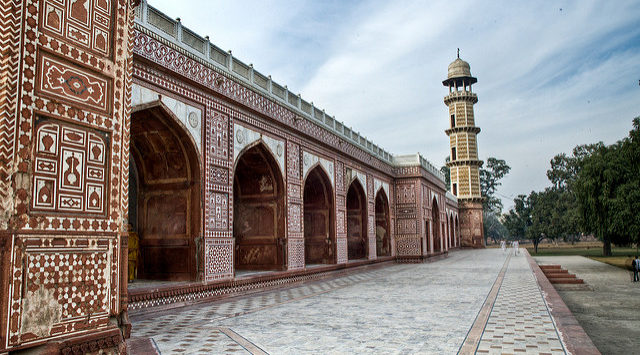The city of Lahore, Pakistan, was an extremely important city for the Mughal Empire. Luckily for us, many of the greatest buildings from that glorious epoch have been preserved in this northeastern city. One great place for any history buff to visit is the Tomb of Jahangir (Urdu: مقبرہُ جہانگیر). Built to honour one of the Mughal Empire’s most powerful emperors, the Jahangir Tomb is one of the best-preserved mausoleums from the Mughal Empire in the world.
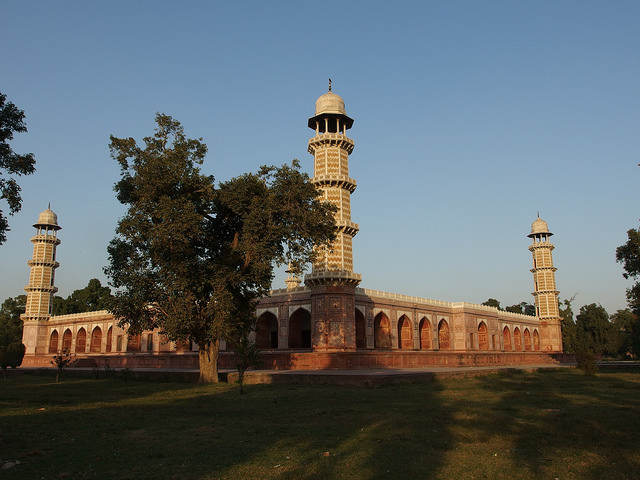
Before we talk about the structure of this tomb, let’s take a look at the history surrounding Emperor Jahangir. First off, the term Jahangir wasn’t actually the name of this fourth Mughal emperor. His real name was Mirza Nur-ud-din Beig Mohammad Khan Salim. The term “Jahangir” (which literally means “conqueror of the world”) became associated with Emperor Salim because he was such a powerful ruler.
Born in 1569 to Emperor Akbar, Jahangir was extremely ambitious for power. He staged a revolt against his father in 1599 and gained the popular support needed to become the fourth Mughal emperor in 1605. After squashing a rebellion from one of his sons, Jahangir presided over one of the most prosperous epochs in the Mughal Empire’s long history. Not only did Jahangir expand the political reach of the Mughals, he also encouraged the arts & sciences. Jahangir was directly responsible for the growth in Mughal portrait painting and collected exotic animals from around the world at his zoo.
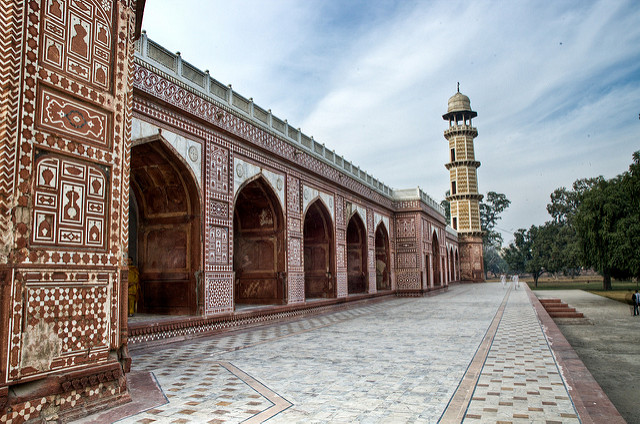
Jahangir was also extremely interested in the wonders of Persian culture. This was especially due to his love for his Persian consort Nur Jahan. We’ll have more to say about Nur Jahan as we explore the construction of Jahangir’s tomb.
Jahangir passed away near Kashmir in 1627. Officials buried the emperor’s entrails in Kashmir and then transported his body to Lahore. Today, visitors can still see Jahangir’s tomb in this incredible mausoleum in the Shahdara Bagh section of Lahore.
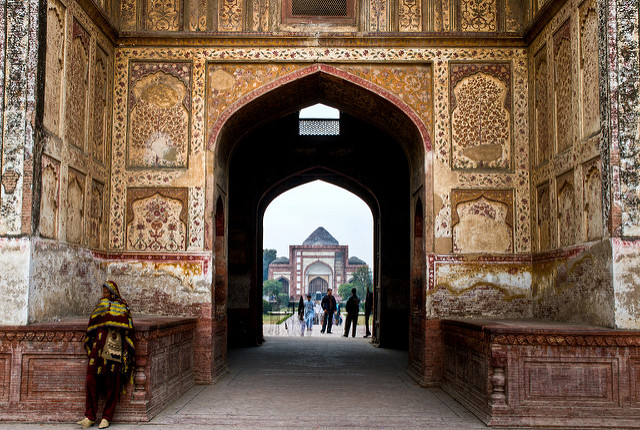
As one of Jahangir’s sons (Shah Jahan) ascended to the throne, he ordered that an elegant tomb is built to honour his father’s memory. He decided to build this tomb in the Shahdara Bagh section of Lahore alongside the Ravi River. Construction began in 1627 and was completed in 1637.
Although official records say Emperor Shah Jahan was the head designer, most historians believe Nur Jahan had more influence over the construction of this tomb complex. The main reason historians think this is the case has to do with the heavy Persian influence throughout the area. There’s a great deal of evidence that suggests Nur Jahan financed the construction of this grand mausoleum rather than the imperial treasury.
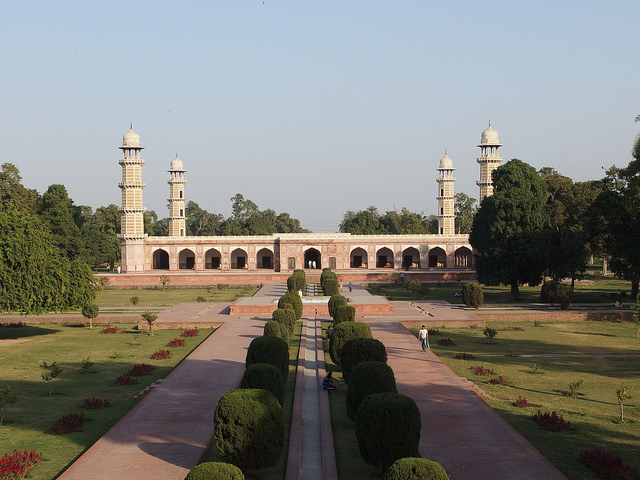
Some scholars believe it was Nur Jahan who chose the spot where this mausoleum was built. Jahangir loved the area of Shahdara Bagh and spent a great deal of time there with Nur Jahan. This was also the place Jahangir would leave from to go to Kashmir.
Sadly, when the Sikh army took over Lahore, they started destroying many beautiful pieces of art in the inner chambers. The Sikhs used this tomb as an army headquarters and then as a private residence. The Sikhs even buried a major army officer called Musa Sahib here in 1828.
It wasn’t until the British took over Lahore that Jahangir’s Tomb started to get rebuilt. In 1889, the British began the long work of restoring this historic area to its former glory.
The entire tomb complex measures 500 meters and is divided into three main areas: the exterior, the gardens, and the inner chambers. Mughal architects used a quadrangle design scheme, which was then further subdivided into four-part gardens. Each of these four-part gardens, officially called chahar baghs, has a central fountain. All guests must walk in through a western gate, called the Akbari Sarai. As you walk through this gate, you’ll see a tiny mosque as well as a tomb dedicated to Asif Khan, Jahangir’s brother-in-law.
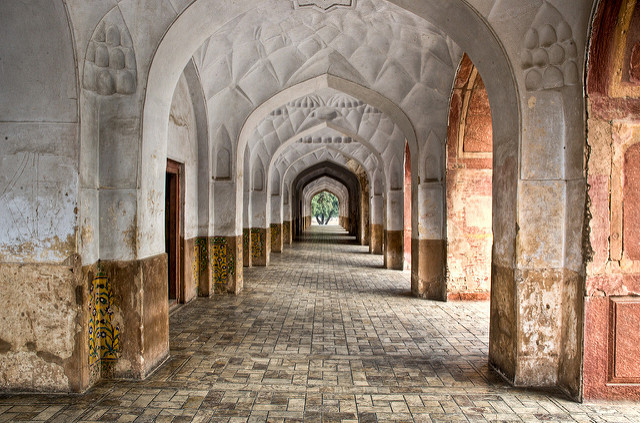
Take note of the four minarets on top of the exterior. Each of these minarets measures around 100 feet in height and are made of brilliant white marble. Admire the exquisite symmetry and geometrical perfection the ancient Mughal architects used to construct this masterful exterior.
Next, you’ll walk through the beautiful gardens surrounding Jahangir’s actual tomb. Art historians will instantly note the elements of a classical Persian paradise garden in this section of the mausoleum. All the water channels and walkways were designed to give the viewer an experience of the Islamic paradise on earth.
Jahangir’s central tomb is located in an octagonal chamber that measures around eight meters in diameter. Take a few moments to look at the central marble cenotaph that has the 99 traditional attributes of Allah written on it. The inscription you’ll see here is yet another example of the Persian influence. Written in Persian, this inscription reads, “This is the illumined grave of His Majesty, the Asylum of Pardon, Nooruddin Muhammad Jahangir Padshah 1037 AH.”
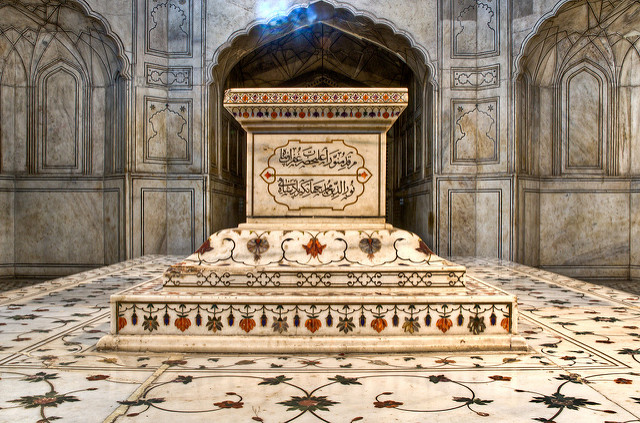
While inside the central tomb area, be sure to pause and marvel at the Mughals’ world-renowned frescoes and tile-work. The Mughals are well respected for their floral ornamentations that decorate so many of their major structures. There’s no shortage of traditional Mughal floral design patterns both inside and outside this impressive complex.
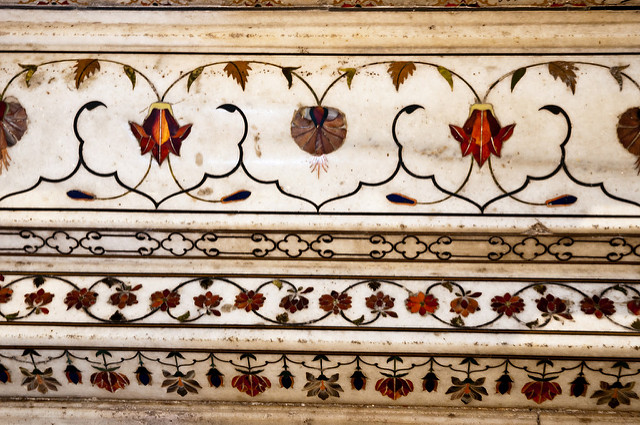
This tomb is so precious to the Pakistani people mainly because it’s the only surviving tomb for a Mughal emperor in the entire nation. Believe it or not, a picture of the tomb was actually on the 1,000 Pakistani Rupee note for a long time. While the 1,000 Pakistani Rupees are no longer printed, they are still in circulation.
The Tomb of Jahangir is a testament to the aesthetic brilliance of the Mughal architects and designers. Visitors can’t help but feel as if they’ve entered into a little slice of paradise as they tour this regal mausoleum. It’s also well worth your time to explore two other tomb complexes in Shahdara Bagh designed by Emperor Shah Jahan: the Tomb of Asif Khan and the Akbari Sarai. Visiting all of these tombs will certainly give you a deep insight into the glory days of the Mughal Empire.
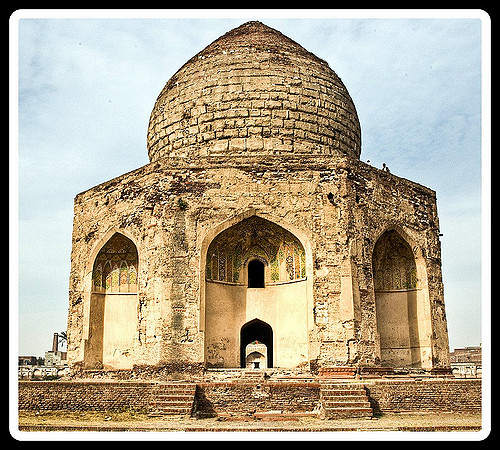
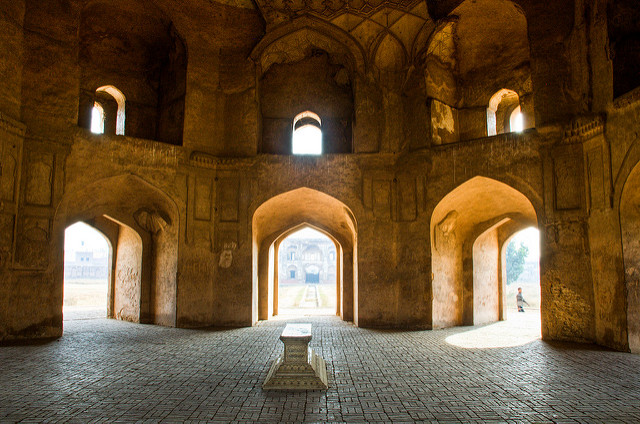
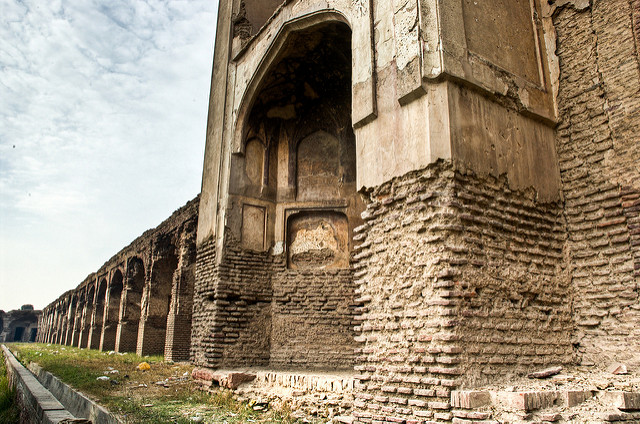
* Photo Credits

